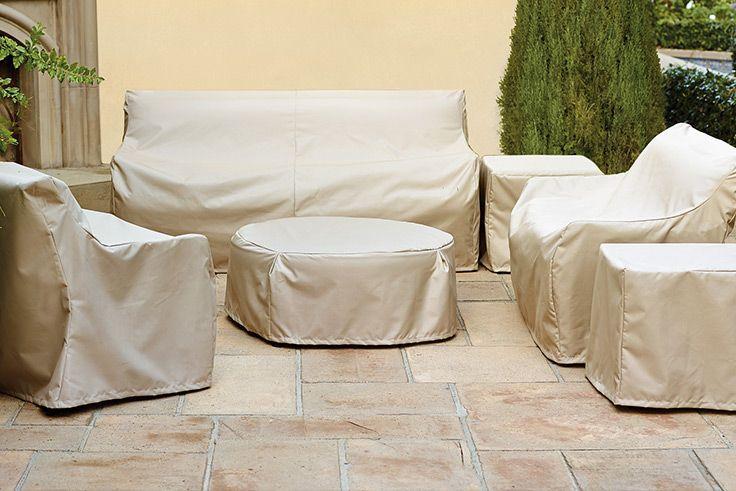Introduction
Patio covers add much-needed weather protection, ensuring outdoor comfort, and keeping the furniture safe. Yet, for off-season or non-use seasons, it’s vital to store patio covers with care in order to maximize their lifespan and continue to keep them in great quality. Failing to store them properly may cause mold, mildew, tearing, and the degradation of material. Knowing how to store patio furniture covers will have them looking wonderful for years.
Cleaning Prior to Storage
One of the most important steps before storage of patio covers is to clean them well. Dirt, debris, and moisture will lead to mold and mildew growth, which can damage the fabric in the long run. Start by sweeping away loose debris such as leaves and dust. Wash with a mild detergent and water, and then a soft brush or cloth for stains or dirt. Avoid storing it using harsh chemicals that may deteriorate the fabric. Rinse carefully with clean water and let it air dry totally. Having the cover dry thoroughly before storing stops mildew and foul odors from arising.
Selecting the Right Storage Spot
Where you put your patio cover makes an enormous difference in keeping it in good condition. Select a dry, cold, and ventilated storage area to prevent contact with high humidity, which will lead to mold growth. Shelter patio covers from direct sunlight because prolonged exposure to UV light can weaken fabrics. Storage areas such as garages, sheds, storage bins, or indoor climate-controlled spaces are common. If storing the cover outdoors, place it in an enclosed and water-tight container to protect it from the elements.
Folding and Packing Properly
Proper folding and packing of outdoor furniture covers in dubai reduces wrinkling and prevents excessive stress on the material. Start by spreading the cover flat on a work surface and pressing out wrinkles. Fold the cover neatly and regularly to prevent rigid folds that will deteriorate the fabric over time. After folding, store it in a well-ventilated plastic bin or storage bag with holes. If in a plastic bin, include silica gel packets to soak up moisture and prevent mildew from building up. Avoid packing the cover too tightly since this will produce permanent creases and weaken the waterproof coating.
Using Protective Covers or Bags
An investment in a protective cover or storage bag tailored to patio covers provides additional protection. The covers are typically breathable, permitting air flow while excluding dust and pests. When a plastic storage bag is used, ensure that it contains small ventilation holes to avoid condensation. Custom storage bags designed for individual patio covers are offered by some manufacturers as a protective and easy-to-use storage option.
Preventing Weight and Pressure Damage
Piling heavy objects over stored patio covers may result in undue stress on the fabric, creating permanent creases or damage. Store patio covers in a special area where they will not be crushed or bent. When storing on a shelf, make sure it is clear of sharp objects that can puncture or tear the fabric. Suspend the cover within a closet or against a storage rack may be an effective alternative to pressure damage avoidance.
Regular Inspection and Storage Cover Maintenance
Even while stored, it is a good practice to inspect patio covers from time to time to ensure they are in good condition. Inspect and check for mold, mildew, or infestation by pests. If there is any issue, clean and dry the cover and store it again. Maintenance and inspection from time to time will prevent small issues from becoming major ones and will ensure the cover remains in excellent condition.
Consideration of Weather and Climate Conditions
Different climates require unique storage issues. In humid climates, there must be special precautions taken to prevent moisture buildup, such as using moisture absorbers or covering in climate-controlled environments. When storing in cold climates, never place covers in freezing temperatures because the material may become brittle and crack. Knowing how the climate impacts the storage environment will help ensure the patio cover lasts.
Labeling and Organizing Storage
If you have multiple patio covers or outdoor accessories stored, it is simpler to keep them organized through labeling storage containers. Include precise labels with the cover type, size, and matching furniture piece. This makes it simple to identify covers when in use, saving time while searching through stored areas. Having a record of stored items will also help to track their condition and replacement status over time.
Using Alternative Storage Solutions
When storage space is limited, consider using alternative storage solutions such as vacuum bags or hanging storage racks. Vacuum bagging will conserve storage space and keep dust and insects out but take care not to compress the material too tightly. Hooks or hanging storage racks in a dry area can also be an effective way of keeping covers off the ground and in good condition.
Conclusion
Proper patio cover storage is required to maximize their lifespan and useability. By following best practices such as thorough cleaning, selection of an appropriate storage area, protection in bags, and pressure damage avoidance, homeowners can extend the lifespan of patio covers. Frequent inspection and weather conditions also make sure that covers are in top condition during periods of dormancy. Spend time on correct storage to keep patio covers from excessive wear and tear, which will allow them to continue protecting and adding beauty to your home for many years.


